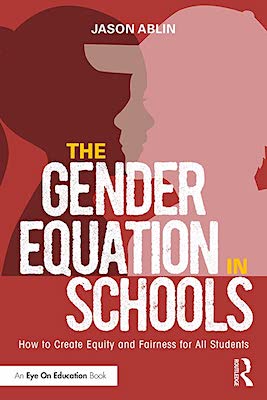Embedding SEL in the Heart of Middle School
If educators are serious about teaching critical skills and serving the whole child, we need to get serious about SEL education and “make it a core and central organizing principle for middle school programs,” says leadership coach Jason Ablin.
Recently I was on a Zoom call with a middle school principal in a midsized district in the middle of the United States. She was joined by her two assistant principals. They were reaching out because of behavioral challenges posed by male students.
The problem didn’t just occur in a few classrooms, with certain teachers who lacked strong classroom management skills. As one of the APs put it, “After the pandemic it feels like we have an entire school full of students who have forgotten what it means to be in a school. The boys are having a particularly hard time. Everyone just seems so anxious.”
“Do you have an SEL (Social Emotional Learning) curriculum?” I asked. “Can you lean into that a bit more heavily with the issues that you’re facing?”
Both APs looked uncomfortable. The principal paused for a moment before answering. “We did,” she answered. “But we’ve had to scale it back, kind of make it more inconspicuous. SEL in our state has become…controversial.”
She’s not alone in the national battleground that education has become in red states. This middle school happens to be in one of a number of states that have banned or will not support SEL programs, on the absurd grounds that they are “indoctrination” or “Marxist propaganda.” For instance, the state of Florida went so far as to ban certain math textbooks from their statewide approved lists because they contained SEL lessons.
SEL Programs Make Sense Developmentally
Social emotional learning should not be controversial. In fact, I can see no better place to center the needs of children developmentally than when they are 10 to 14 years old. SEL provides the perfect anchor to help students weather this developmental storm.
One obstacle to implementing SEL, aside from right-wing culture wars, is that even in more progressive environments administrators can often, consciously or not, place these programs into a gender box that ultimately devalues them, by making them secondary to the entire enterprise of education in general.
The good news is that of 27 states have mandated SEL education on some level of K-12. All 50 states have done so for Pre-K programs (CASEL, 2022). The educational leaders behind these mandates understand that teaching the core competencies embodied in SEL – self-awareness, self-management, social awareness, relationship skills, and responsible decision making – has value to student learning and well-being.
And the efficacy of SEL is well documented. Do research on SEL and you’ll read the number 11% reiterated over and over, which would be the differential of student academic performance between those students who have SEL programs in their schools and those who do not. And it’s not just in the raw testing scores that we see these results.
“Compared to control students, students participating in SEL programs showed significantly more positive outcomes with respect to enhanced SEL skills, attitudes, positive social behavior, and academic performance, and significantly lower levels of conduct problems and emotional distress,” according to an examination of four meta-analyses of SEL programs.
Another less cited attribute of SEL is its endurance over time. Students who were exposed to rich SEL programming and learning showed such staying power that students were still positively impacted for as much as 92 months even after programs had been terminated.
The Danger in “Genderizing” Critical Skills
SEL is critical because it addresses so many different aspects of who children are as they mature. And how much of the way we compartmentalize what students learn has to do with gendered perceptions of human qualities? When we create gendered binaries in our approach to teaching and learning, we create a hierarchy of value which is imposed on these different artificial subdivisions of child development and ultimately success in school.
For example, social awareness and relationship skills are not only critical to our well-being as developing people. They also mark critical skills necessary for success in school and beyond. However, these skills are normally seen as part of the strict divide between the feminine and masculine.
These feminized qualities are then treated as secondary and not as worthy of the serious consideration of what school should ultimately be about. It is a fallacy deeply embedded in our culture which stymies the development of our students’ success.
The parallel phenomenon in the adult world is when we discuss developing “soft” skills with workers, the same skills embraced by SEL programs. The name, in and of itself, is the telling giveaway. “Soft” skills, such as communication, teamwork, and stress management, are often categorized as feminized behaviors and thus seen as secondary to more critical skills for work, life and success.
When we stigmatize these types of abilities as “feminine,” we place them into an easily dismissed category in our highly gendered constructs.
Some Telltale Signs That SEL Is Marginalized
What are some of the telltale signs that this hierarchy based on gender perceptions is happening with SEL programs? Faculty members who complain about or have become frustrated trying to implement these programs into schools voice several frustrations. To wit: Not enough time or sustained training to learn how to do it well. They say that their schools’ leadership do not make it a priority in scheduling or actively dismiss its importance.
All these points indicate the misguided perception that SEL is not “real” school, and that it’s not part of the serious business of education. Even with all the data to indicate otherwise, SEL is either marginalized or devalued to the point where it cannot have the influence it deserves.
To see these critical emotional and relational skills as somehow confined to feminine traits undermines their great value. The equivalent would be dismissing caring for children, grocery shopping or washing dishes as not “real” work.
These compartmentalized value systems have existed globally for many generations. They mistakenly separate emotion from thought, interaction from critical thinking, caring and kindness from serious decision making. Yet such dismissive pigeon-holing has been debunked in cognition and brain research for decades.
Humans Are Fundamentally Social & Emotional
Mary Helen Immordino Yang, a professor at the University of Southern California who studies the relationship between cognitive neuroscience and education, writes:
“Modern biology reveals humans to be fundamentally emotional and social creatures. And yet, those in the field of education often fail to consider that the high-level cognitive skills taught in schools…do not function as rational, disembodied systems, somehow influenced by but detached from emotion and the body.”
If we are serious about the whole child, we will not only embrace SEL education but also make it a core and central organizing principle for middle school programs.
SEL Whole-School Strategies
Here are several fundamental strategies that should be considered when integrating such initiatives into middle school programs.
► Make it central to how each day begins and ends. Roundtable discussions, daily gratitudes, and dedications.
► Integrate SEL everywhere. Avoid making it an overlay of existing programs. Students should be made constantly aware of these critical skills they’re building.
► Prioritize it like you would the teaching of math or language arts. Avoid making it simply appear as an add-on or an easily removed temporary fixture. Make it part of the overall schedule planning beyond stand-alone lessons or in student advisory sessions.
► Involve parents. Make them part of the implementation process so they can be your most supportive advocates. Share the research with them and be highly transparent about all stages of implementation. Ask them to reinforce their vocabulary and thinking at home.
► Stop framing SEL as “soft” skills. Don’t genderize these attributes. Just as or even more critical than math or science or reading, these skills are the key to helping our students become their best selves.
Using SEL as a Transformer
Our middle schools should be completely transformed to make these SEL-related skills, abilities, and values central to the mission of middle level education. I provide an extensive model to recalibrate the middle school mission in the appendix to my book, The Gender Equation in Schools.

Jason currently consults with schools, leading training and workshops on gender equity, positive faculty engagement, and school culture. He lives in Los Angeles with his wife and two daughters. Visit his website.
































